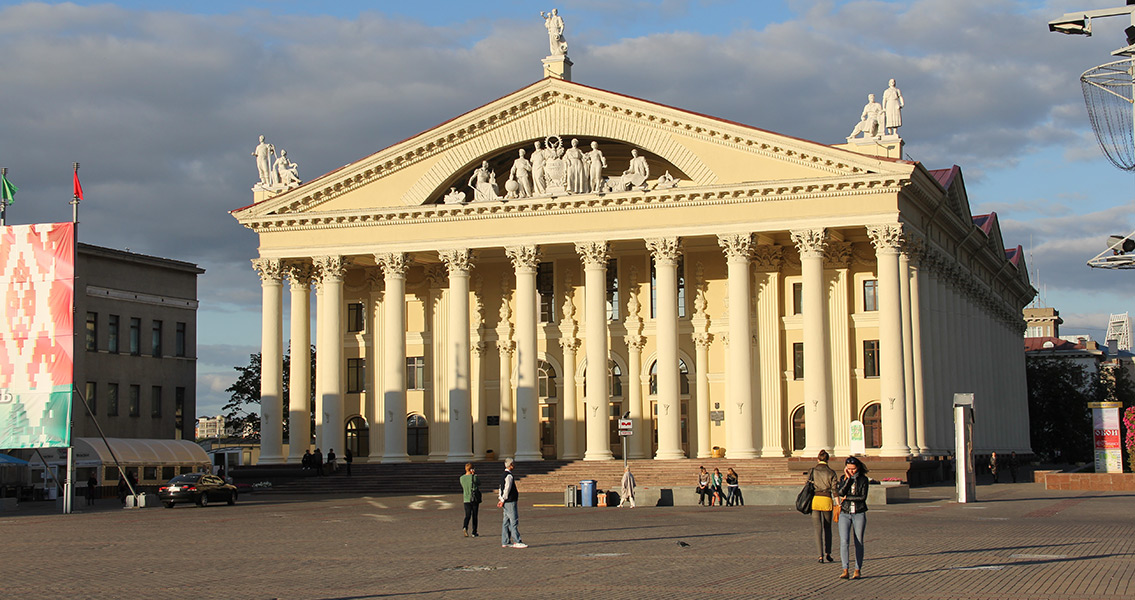<![CDATA[On 25th March, 1918, Belarus declared itself an independent republic for the first time, when the Rada (council) pronounced the creation of the Belarusian Peoples' Republic. Although the Belarusian people share a distinct identity and language, they had never enjoyed political unity and sovereignty before 1918. The colonisation of what is now Belarus began at the turn of the last millennium, following the migration of Slavic tribes. From the sixth century CE, the initial political organisations started to form in the territory. The first historical records of substantial settlement in the areas which would become Minsk and Vitebsk originate from the ninth century. Over the next centuries, Belarusian history was defined by the major regional forces in Eastern Europe. From the thirteenth to the sixteenth centuries it was a part of the Grand Duchy of Lithuania, before becoming part of the Kingdom of Poland following the Union of Lublin which joined the Grand Duchy of Lithuania and Poland into a single state. A series of wars in the eighteenth century signaled the gradual dismantling of this Polish-Lithuanian state, and by 1772 the territory which makes up modern Belarus was annexed to Russia. From then its history was inextricably linked with Russia's, with the territory serving as battleground in the Napoleonic Wars. By the late nineteenth century the first signs of Belarusian nationalism had started to stir, culminating in the creation of Gomon, the first national Belarusian political party, in 1903. The Declaration of Independence, in 1918, was a moment of opportunism in the chaos of Russia's withdrawal from the First World War and the Bolshevik Revolution. At the time of the declaration, Belarus was occupied by German forces, under the terms of the Treaty of Brest-Litovsk. The Rada took advantage of the collapse of the Czarist empire to declare Belarusian sovereignty for the first time. This initial independence proved to be short lived. The surrender of Germany on the Western front eight months later invalidated the territorial agreements of Brest-Litovsk, and the German forces withdrew from the country. Belarus suddenly found itself with little defence, and in January 1919 the Red Army entered Minsk and exiled the Rada, establishing the Belarusian Soviet Socialist Republic. Over the following decades Belarus again found itself in the middle of other countries' wars. In the uncertainty of post Brest-Litovsk Eastern Europe, Poland sought to stake a claim on its former territory, and invaded the newly Soviet state. The Treaty of Riga, signed in 1921, divided Belarus, giving Poland control over the western part and leaving the rest under the authority of the Soviet Union. During the Second World War, the Soviet Union reclaimed the Polish controlled section of Belarus following the Molotov-Ribbentrop Pact. Belarus became a scene of some of the most severe fighting of the conflict, being occupied by Nazi Germany after its declaration of war on the Soviet Union, and then re-occupied by the USSR as it pushed the Nazi forces back through Europe. This period is one of the most tragic in Belarusian history. The country felt the full brutality of the war, with upper estimates claiming a fifth of the population lost their lives. On the other hand the Belarusian Partisans, backed by the Soviet Union, are often regarded as some of the most effective resistors to Nazi occupation, carrying out a determined campaign of guerrilla warfare which severely disrupted the Nazi war machine. Following the war, Belarus again came under the control of the Soviet Union and felt the effects of post-war Stalinisation. It remained a part of the Union until declaring independence in 1991, following the collapse of the USSR. On 25th March, 1993, Belarusian Freedom Day was celebrated in the nation's cities for the first time, 75 years after the country had first declared its independence. Image courtesy of Wikimedia Commons User: Anna Chervonets ]]>
Belarus Proclaims Independence
